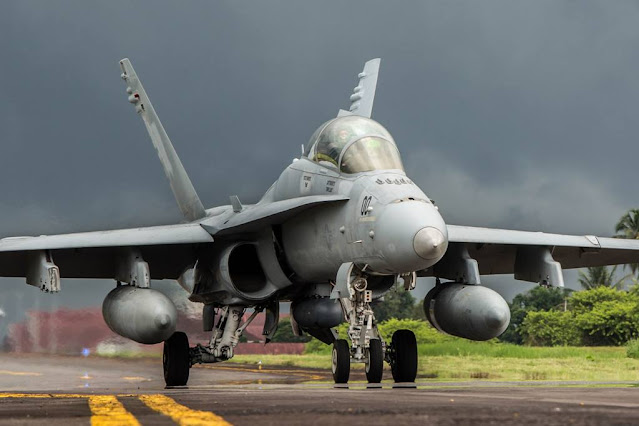Raytheon successfully tests AESA fire-control radar on USMC Hornet
 |
| US Marine Corps F/A-18D Hornet assigned to Fighter Attack Squadron 225. |
Raytheon Intelligence & Space’s pre-production APG-79(V)4 radar system, was successfully flown on a U.S. Marine Corps F/A-18 Hornet earlier this year, at Naval Air Weapons Station in China Lake, California. This is the radar system’s first flight on the aircraft since RI&S delivered the prototype radar in 2021.
The APG-79(V)4 is an APG-79 radar derivative that employs the first airborne GaN-AESA fire-control radar to help pilots detect and track enemy aircraft from greater distances with greater accuracy and meets the power and cooling requirements of legacy aircraft.
“Following successful ground testing and the delivery of the prototype radar, this flight test was critical to observe performance in the air,” said Thomas Shaurette, vice president of F/A-18 & Global Strike Radars for RI&S. “It allowed our partners to see the V4 radar’s enhanced detection and tracking abilities in real-time.”
The U.S. Marine Corps pilot demonstrated the radar’s seamless integration with the legacy Hornet avionics. The APG-79(V)4 radar is common in parts and technology with the legacy AN/APG-79 radar used in the U.S. Navy’s F/A-18 Super Hornet, thus optimizing cost and sustainment. Flight tests will continue to support weapons system integration on the fleet.
The Naval Air Systems Command recently awarded additional contract modifications to equip the Hornet fleet with more radars in 2021, and the total production value for domestic and foreign military sales customers is over $300 million.
Source: Raytheon
Image: USMC/Cpl. Aaron Henson





No comments
All comments related to the contents of our articles are welcome. It is not allowed to post promotional messages, links to external sites, or references to activities not related to this blog.